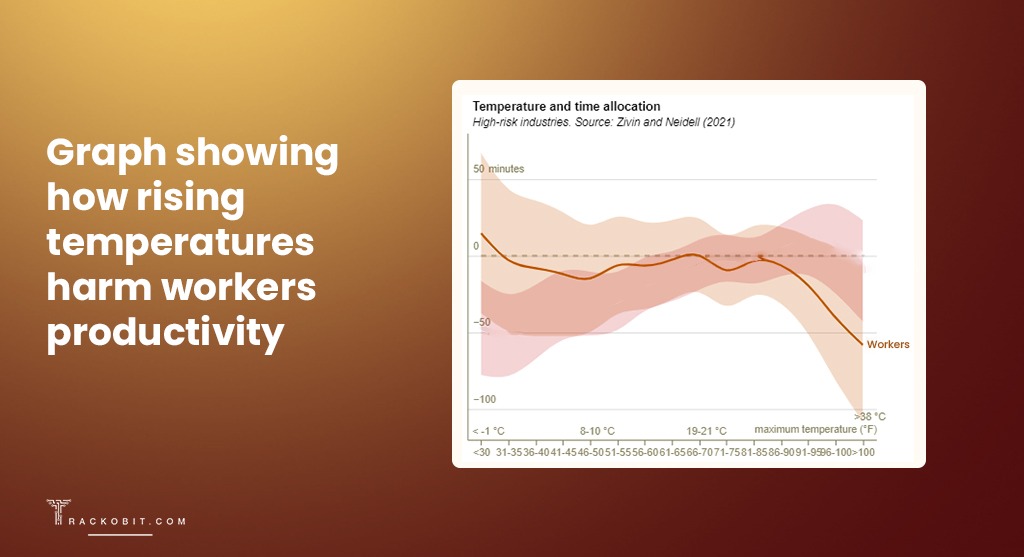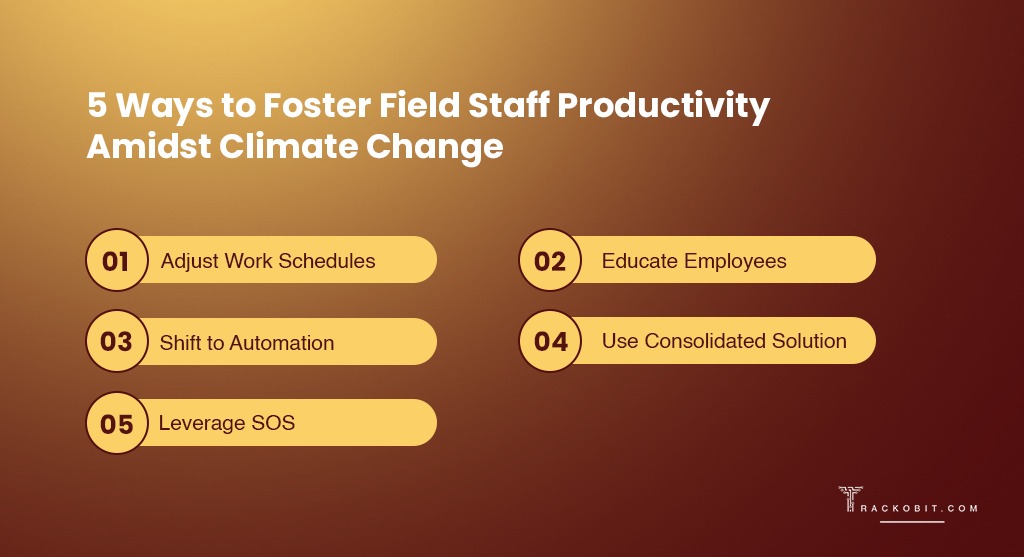-
TrackoBit
Manage commercial vehicles with the new-age Fleet Management Software
TrackoBit -
TrackoField
Streamline your scattered workforce with Field Force Management Software
TrackoField -
Features Resources
-
Blog
Carefully curated articles to update you on industrial trends. -
White Paper
Insightful papers and analysis on essential subject matters. -
Glossary
Explore an alphabetical list of relevant industry terms. -
What’s New
Get TrackoBit & TrackoField monthly updates here. -
Case Study
Explore the cases we solved with our diverse solutions. -
Comparisons
Compare platforms, features, and pricing to find your best fit.
-
About Us
Get to know TrackoBit: our team, ethos, values, and vision. -
Careers
Join the most dynamic cult of coders, creatives and changemakers. -
Tech Support
Learn about our technical support team and services in detail. -
Events
Check out the exhibitions where we left our marks and conquered. -
Contact Us
Connect with us and let us know how we can be of service.
How Does Climate Change Impact Field Workers’ Productivity and Efficiency?
- Author:Shivani Singh
- Read Time:10 min
- Published:
- Last Update: May 28, 2025
Table of Contents
Toggle
Climate change is making everyone sick, and the field service industry is no exception. Learn how the dire consequences of climate change are declining the productivity and efficiency of field processes.
Table of Contents
Toggle
Over long periods, we adapt to our local climates. So, a slight change in temperature (above or below) makes us more vulnerable to associated health impacts. The same happens with the field workers, who work from the field to get their hard-earned money.
As these employees are mostly on the field, working at construction sites, traveling to customer locations for after-sales repair, and performing door-to-door sales, they are highly susceptible to climate change’s consequences. When they are working out in extremely hot and humid climates, it can lead to their exhaustion and restrict them from safely and timely finishing off their assigned tasks.
This results in declined field workers’ productivity while impacting the targeted work schedule.
Although we cannot challenge climate change, we can curb the negative impact it brings on field workers’ productivity. But before learning that, let’s explore more about this environmental catastrophe.
Stats Showing How Changing Climate is Impacting Employees’ Productivity
Even if employees turn up to work, they may not do their best due to the hazardous effects of climate change. That’s what would be the future as various reputed organizations stated below:

- Loughborough University, UK predicted that labor productivity could fall to 40% in India with rising temperatures.
- Regions in Southeast and South Asia, northern South America, and West and Central Africa can expect to bear decreased physical work capacity by 70% due to climate change.
- WHO further stated that 3.6 billion people already live in areas highly at risk due to climate change.
- The University of Chicago has claimed that a continuous surge in average temperature leads to employees’ absences and declined organizational productivity.
- The hourly work capacity goes down when the temperature moves beyond a certain exposure level (30-40 degrees Celsius).
Climate Change and Field Workers Productivity: How They Are Interconnected with Each Other
The detrimental effects of climate change prevent field workers from conducting their tasks in diffused workplaces. Because employees are more likely to get adverse effects on their health, being most exposed to hotter or fluctuating temperatures. This leads to an unhealthy workforce and limited working hours. Let’s learn more about what shape and form climate change disrupts field employee productivity.
Rising Temperature
Normally, human bodies cool themselves through sweating. But today’s hot and humid temperature is making it impossible for sweat to evaporate quickly, making outdoor employees struggle with heat stroke.
Even Loughborough University, UK has done 700 heat stress trials on working people in a wide range of temperatures and different weather conditions. Upon completing these trials, they found that individuals achieve maximum work capacity or 100% physical work capacity in a cool climate.
That means, rising temperatures will impact field employee productivity and reduce their ability to undertake work in the field when the sun exposure is high. Moreover, managers cancel schedules for their employees during excessive temperatures.
Something Important!
|
Reduced Air Quality
According to the National Center for Biotechnology Information (NCBI), a 10 ppb increase in ozone leads to a statistically significant decrease in workers’ productivity by 5.5 percent.
Moreover, researchers at the University of California found that workers make the most money when the ground-level ozone readings are at the lowest. As air quality goes down, workers become less productive and creative. That means air quality plays a major role in increasing productivity.
However, with a constant surge in air pollution, outdoor field workers bear the brunt of its harsh effects. They get exposed to dust fumes, harmful pollutants, and toxic gasses from waste, throughout their working hours, and become more vulnerable to airborne diseases.
Constant interaction with poor air quality leads to lower levels of oxygen in employees’ body tissues. This could make field workers feel symptoms like breathing difficulty, rapid heart rate, and restlessness during their working hours.
That’s not it!The repercussion of climate change disturbs field employees’ mental peace too and makes them more anxious about achieving targets. How? Field workers when encountered with ailments, fail to meet their targets, adding more to their work stress. Besides, the urge to meet daily schedules despite the rising temperature and poor air quality makes them encounter flipped emotions. A study from Australia also suggests that heat waves lead to increased rates of mental disorders, affecting workplace absenteeism and productivity. |
5 Best Solutions to Reduce the Impact of Climate Change on Field Workers’ Performance

Climate change is a global phenomenon!
So it’s important to tackle before they overpower the work schedule. Here are some quick approaches that can help you prevent your field staff from becoming prey to fluctuating weather conditions.
1. Adjust Work Schedules
If possible, try to adjust schedules for employees when the temperature is cooler, like when the sun has subsided. This way, you can avoid the risks associated with the highest temperature. Also, this will make your employees feel less exhausted during their journey to the task location. Allowing them to put their best efforts to complete the service tasks.
As on-the-spot changes are not possible with manual scheduling processes, you can have the best field job scheduling software. The software lets you make last-minute changes upon assessing the weather conditions. For instance, you can schedule jobs for the evening to prevent your employees from getting exposed to extreme heat. Field employees get notifications on their mobile devices about new jobs assigned along with the complete details.
Besides, the software helps you plan a schedule in a way where you allow your employees to take halts or breaks while commuting to the job site so they are secured from bearing heatwaves.
2. Educate Employees
Educate and train your employees about personal protective equipment so that they can arm themselves in extremely heated and polluted environments.
But, what is Personal Protective Equipment (PPE)?Personal Protective Equipment commonly referred to as PPE, is worn to minimize exposure to hazards that lead to serious workplace illnesses. It is important for field employees to wear PPE, which covers their upper or lower body and face in warm conditions and heat waves. |
Here is how PPE mitigates climate change after-effects on employees:
- Its lightweight, breathable, and loose-fitting clothing allows airflow and cools down employees’ bodies.
- Since it includes full-sleeved shirts and pants, it lets employees cover their bodies and avoid sunburn and extreme exhaustion.
- Being made of light-colored cloth, it reflects the heat better than dark-colored ones.
- Some kits come with wide-brim hats with attached fabric which helps shade employees’ necks, heads, faces, and eyes.
Besides, you must also ensure that employees take relevant precautions by:
- Keeping up to date with weather forecasts and warnings.
- Staying hydrated when they are exposed to extreme heat.
- Taking water bottles with them.
- Stocking up on medicines and first aid kit boxes for emergencies.
- Getting their medical check-ups done in the office.
- Sharing their live locations with managers for better collaboration.
- Taking regular breaks to regain energy for further tasks.
- Arranging meetings in cool and well-ventilated places with minimum sun exposure.
3. Shift to Automation
Reduce your field staff’s travelling back and forth between head office and city offices whenever you can. Automate every process, be it marking attendance, applying for leaves, submitting reports, etc.
Here is more on how you can implement automation for enhanced workforce productivity.
- Enable remote attendance marking for your field workers so that they don’t have to travel to the office just to punch in/out.
- Share and archive digital documents over a single platform where all team members can access them when they need them without exertion.
- Automate employees’ scheduling process based on their current locations and weather conditions. This will prevent them from roaming on the field during peak temperatures.
- Facilitate smooth leave request and approval procedures so employees can simply apply for leaves from anywhere with just a few taps on their mobile apps.
- Simplify expense management and reimbursement process through software wherein your staff can effortlessly upload the invoice without having to wait in line.
- Distribute ad-hoc tasks fairly to all employees with task management to mitigate overburdening specific team members only.
By shifting to automation with TrackoField, you can reduce physical labor and the associated risk of sickness when employees move to the office for even some minor tasks. This helps in better monitoring field employee productivity.
Also, Go for Digital Documentation!
In this excessive heat condition, it gets hard for your field workers to travel while carrying heavy files and documents. However, when you convert those files into digital documents, which they can access over their phones, you can save your employees from that heavy lifting. Also, you will reduce carbon footprints, leading to a sustainable environment. So, take the first step towards automation with digitization and free up workers to focus on value-added activities.
TrackoField’s executive app lets your executives perform tasks like taking orders, managing reports, and adding POD – all digitally.
4. Switch to Consolidated Solution
Switching to a consolidated field force management solution is one best way to improve field employees’ productivity amidst climate change. These consolidated solutions consist of various modules, capabilities, and functionalities in one place.
For instance, whether it’s about getting/submitting tasks, marking attendance, claiming expenses, or processing orders, your field workers can do it all from this one-stop solution. As every information is available on the platform, they won’t have to travel and be physically present in front of their managers.
From their specific task locations, they can manage all those above-mentioned tasks, which earlier required moving back and forth to the office.
Seems like you want to test one such consolidated solution. Well, what about trying TrackoField for free? The software has all the features like:
All these equipped capabilities make TrackoField an all-encompassing employee productivity tracking software. |
5. Utilize SOS
SOS plays a great role in improving field employees’ safety and security. Having this button on the field employee mobile app helps workers notify managers if they encounter critical situations.
Upon pressing this button, managers receive the employee’s exact location. Therein, they send them immediate help to ensure a quick response. This button bridges the gap between safety and rapid response. Also, it helps managers enhance security and efficient crisis management.
In this time and age, when India issues heatwave alerts as Delhi hits 52.9 degrees Celsius, this button comes as a savior. Let your field employee be equipped with an SOS button-enabled field executive app to ensure your employees’ safety against this weather condition.
To Sum it Up!
In this tough time, it becomes crucial to take proper precautions against Climate Change. So, adopt the above strategies to flexibly alter your field staff’s schedule, and turn every process digital to prevent their back-and-forth travel time. And most importantly, switch to the best field employee tracking software that lets you do all that effortlessly.
The software, by automating most field workers’ mundane tasks, helps reduce their travel time and enhance their overall productivity.
Wondering which software to choose?
Sign up to use TrackoField for free.
Shivani is a Content Specialist working for TrackoField. She comes with years of experience writing, editing and reviewing content for software products. Her underlining expertise in SaaS especially H... Read More
Related Blogs
-

Unified Field Workforce Dashboard: Monitor Tasks, Attendance & More In One Place
Mudit Chhikara December 15, 2025Bring full clarity to field operations with a single, real-time field workforce dashboard.
-

Loan Disbursement in NBFCs: From 15 Days to 3 Minutes – Learn How
Shemanti Ghosh December 11, 2025TrackoField’s AI-enabled field force automation software speeds up loan disbursals in NBFC with field agent task monitoring and facial attendance…
-

AI Facial Recognition Attendance: A Game-Changer for Fraud-Free Field Operations
Mudit Chhikara December 9, 2025Ensure transparent attendance and eliminate fraud before it even starts with AI facial recognition and geofencing.
-

Boost Agri-Input Sales Efficiency with TrackoField’s Sales Order Management Module
Shemanti Ghosh December 3, 2025Grow Agri-input sales and expand farmer database with TrackoField’s Sales Order Management module.

Subscribe for weekly strategies to boost field team productivity.
Your inbox awaits a welcome email. Stay tuned for the latest blog updates & expert insights.
"While you're here, dive into some more reads or grab quick bites from our social platforms!"Stay Updated on tech, telematics and mobility. Don't miss out on the latest in the industry.
We use cookies to enhance and personalize your browsing experience. By continuing to use our website, you agree to our Privacy Policy.


































